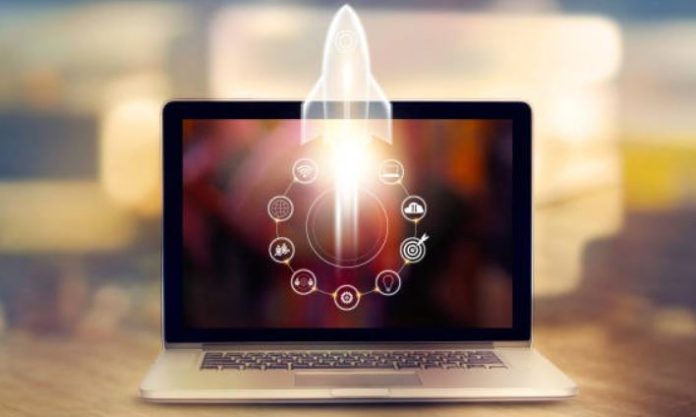You use your computer a lot! It seems to be running slower than it did even last week. What is up? Here are some steps to take to get back that speed.
These steps should make a marked improvement on the speed of your computer. Best of all, they are mostly easy to do and don’t cost anything!
Before you perform any of these steps, you should make sure you have a current and valid backup of your hard drive, just in case.
1. Clean and organize your hard drive.
Don’t put a bunch of files in the root of your C: drive. Make folders that reflect how you work and put files in those folders.
The root of your c: drive should have very few files and mostly folders. Open a command prompt by going to Start->Run and typing “Cmd” without the quotes and enter.
This will open a command window. It should be in the root of C:. Type cd %temp% and press enter.
This will take you to the temporary folder. Type del .and press enter. This should delete any temporary files that have been building up in your temporary folder.
The ones that cannot be deleted will not be deleted. You can also clean up any folders that have tmp or .tmp in their names. Again, the computer system will not let you delete files that are in use.
Open your browser and delete any other files and folders that are no longer needed.
2. Perform a check of the hard drive.
From your Explorer window, right click on the C: drive and select Properties. Then select the Tools tab and the Check Now… button.
Check all options and the Start button. Confirm that you want to perform the check after a reboot.
Do this for any other hard drive you may have in your computer. Reboot your computer and let the system check the hard drives and fix any issues. This may take some time, so be patient.
3. Clean up Internet browser files.
Surfing the Internet is a definite cause for putting stuff on your computer that will slow it down.
Before doing anything with your Internet browser, make sure you know the important information you enter at the websites you visit.
You will be clearing the history, and that saved information will be gone. Most of it is not needed, but there may be some things that you have come to rely on, such as passwords.
For Internet Explorer, select Tools -> Internet Options. A new window will open. In the Temporary Internet files section, select to Delete Cookies and OK. Select Delete Files and OK. In the History section, select Clear History and Yes. Then select OK to close the Internet Options.
For Firefox, select Tools -> Options. In the Privacy section, select the Clear All button and Clear All Information. Then select OK to close the Options window.
For other browsers, there should be similar settings.
4. Update your virus software and virus definition files.
Keep them up to date. I would suggest setting your virus software to automatically update every day. Perform a full virus scan on your PC.
5. If you do not have antispyware software loaded, you need to get one loaded. Microsoft has a free one that you can get at their website.
It is called Windows Defender and should be available to download from here: http://www.microsoft.com/athome/security/spyware/default.mspx
Make sure you keep your antispyware software up to date and keep it up to date.
6. Defragment your drives.
From your Explorer window, right click on the C: drive and select Properties. Then select the Tools tab and Defragment Now… button.
Highlight the C: drive and select the Defragment button. Perform this operation for each drive in you PC.
Perform these steps on a routine basis and your computer should run much better.

